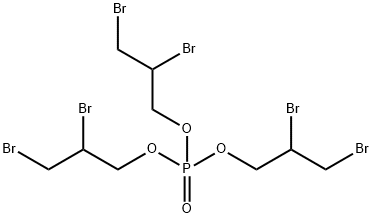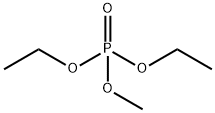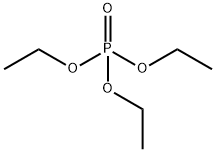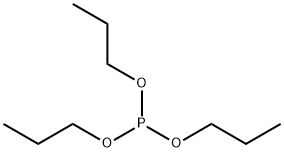Tris(2,3-dibromopropyl)phosphate
- CAS NO.:126-72-7
- Empirical Formula: C9H15Br6O4P
- Molecular Weight: 697.61
- MDL number: MFCD00039191
- EINECS: 204-799-9
- SAFETY DATA SHEET (SDS)
- Update Date: 2024-12-18 14:15:32

What is Tris(2,3-dibromopropyl)phosphate?
Chemical properties
TDBP is a thick, clear to yellowish liquid. Odorless.
The Uses of Tris(2,3-dibromopropyl)phosphate
Tris(2,3-dibromopropyl) Phosphate is a flame retardant that has previously shown to be a mutagen and carcinogen in experimental animals. Tris(2,3-dibromopropyl) Phosphate is widely used in pastics an d textiles.
The Uses of Tris(2,3-dibromopropyl)phosphate
Flame retardant for plastics and synthetic fibers. Formerly used in children's sleepwear.
What are the applications of Application
TBPP is a carcinogenic manufacturing component
Definition
ChEBI: Tris(2,3-dibromopropyl) phosphate is a trialkyl phosphate.
General Description
Clear colorless to pale yellow viscous liquid.
Air & Water Reactions
Insoluble in water.
Reactivity Profile
TRIS(2,3-DIBROMOPROPYL)PHOSPHATE is stable at temperatures up to 392-482°F. Major decomposition begins at 586°F. Is hydrolyzed by acids and bases .
Hazard
A carcinogen; use restricted.
Fire Hazard
TRIS(2,3-DIBROMOPROPYL)PHOSPHATE is combustible.
Safety Profile
Confirmed carcinogen with experimental carcinogenic, neoplastigenic, tumorigenic, and teratogenic data. Poison by intraperitoneal route. Moderately toxic by ingestion, Experimental reproductive effects. Human mutation data reported. An eye and severe skin irritant. Can cause testicular atrophy and sterility. Once used as a flame retardant addtive to synthetic textiles and plastics, particularly in children's sleepwear. Use discontinued because it can be absorbed by human skin, or chewed or sucked off sleepwear by infants, May be flammable when exposed to heat or flame. When heated to decomposition it emits very toxic fumes of Brand POx.
Potential Exposure
Tris-BP is used as a flame retardant additive for synthetic textiles and plastics. It was applied to fabrics used for children’s clothes (sleepwear in particular) with some used as a flame retardant in other materials, such as urethane foams. Commercial preparations of tris-BP can be obtained in two grades, viz, HV (high in volatiles) and LV (low in volatiles). A typical LV sample has been reported to contain the following impurities: 0.05% 1,2-dibromo-3-chloropropane (BrCH2CHBrCH2Cl); 0.05% 1,2,3-tribromopropane (BrCH2CHBrCH2Br); and Tris(2,3-dibromopropyl) Phosphate 3013 0.20% 2,3-dibromopropanol (BrCH2CHBrCH2OH). Use and expo sure has greatly decreased after a ruling by the Consumer Product Safety Commission in April 1977.
Carcinogenicity
Tris(2,3-dibromopropyl) phosphate is reasonably anticipated to be a human carcinogen based on sufficient evidence of carcinogenicity from studies in experimental animals.
Shipping
UN3082 Environmentally hazardous substances, liquid, n.o.s., Hazard class: 9; Labels: 9-Miscellaneous hazardous material, Technical Name Required.
Incompatibilities
Incompatible with oxidizers (chlorates, nitrates, peroxides, permanganates, perchlorates, chlorine, bromine, fluorine, etc.); contact may cause fires or explosions. Keep away from alkaline materials, strong bases, strong acids, oxoacids, epoxides.
Waste Disposal
Consult with environmental regulatory agencies for guidance on acceptable disposal practices. Generators of waste containing this contaminant (≥100 kg/mo) must conform with EPA regulations governing storage, transportation, treatment, and waste disposal.
Properties of Tris(2,3-dibromopropyl)phosphate
| Melting point: | 5.5°C |
| Boiling point: | 544.2±50.0 °C(Predicted) |
| Density | 2.27 g/cm3(Temp: 25 °C) |
| storage temp. | room temp |
| solubility | Chloroform, Methanol (Slightly) |
| form | neat |
| Water Solubility | 8mg/L(24 ºC) |
| Merck | 13,9821 |
| Stability: | Moisture Sensitive |
| CAS DataBase Reference | 126-72-7(CAS DataBase Reference) |
| IARC | 2A (Vol. 20, Sup 7, 71) 1999 |
| EPA Substance Registry System | Tris(2,3-dibromopropyl) phosphate (126-72-7) |
Safety information for Tris(2,3-dibromopropyl)phosphate
| Signal word | Danger |
| Pictogram(s) |
 Exclamation Mark Irritant GHS07  Health Hazard GHS08  Environment GHS09 |
| GHS Hazard Statements |
H302:Acute toxicity,oral H315:Skin corrosion/irritation H350:Carcinogenicity H400:Hazardous to the aquatic environment, acute hazard |
| Precautionary Statement Codes |
P201:Obtain special instructions before use. P273:Avoid release to the environment. P308+P313:IF exposed or concerned: Get medical advice/attention. |
Computed Descriptors for Tris(2,3-dibromopropyl)phosphate
New Products
(S)-3-Aminobutanenitrile hydrochloride 4-Methylphenylacetic acid N-Boc-D-alaninol N-BOC-D/L-ALANINOL Tert-butyl bis(2-chloroethyl)carbamate 3-Morpholino-1-(4-nitrophenyl)-5,6-dihydropyridin- 2(1H)-one Furan-2,5-Dicarboxylic Acid Tropic acid 1-Bromo-3,5-Di-Tert-Butylbenzene S-2-CHLORO PROPIONIC ACID ETHYL ISOCYANOACETATE 2-Bromo-1,3-Bis(Dimethylamino)Trimethinium Hexafluorophosphate 4-IODO BENZOIC ACID 3-NITRO-2-METHYL ANILINE 1-(2,4-DICHLOROPHENYL) ETHANAMINE (2-Hydroxyphenyl)acetonitrile 4-Bromopyrazole 2-(Cyanocyclohexyl)acetic acid 4-methoxy-3,5-dinitropyridine 1-(4-(aminomethyl)benzyl)urea hydrochloride 2-aminopropyl benzoate hydrochloride diethyl 2-(2-((tertbutoxycarbonyl)amino) ethyl)malonate tert-butyl 4- (ureidomethyl)benzylcarbamate Ethyl-2-chloro((4-methoxyphenyl)hydrazono)acetateRelated products of tetrahydrofuran








You may like
-
 2033-24-1 98%View Details
2033-24-1 98%View Details
2033-24-1 -
 42831-50-5 5-METHYLISOXAZOLE-4-CARBOXYLIC ACID 98%View Details
42831-50-5 5-METHYLISOXAZOLE-4-CARBOXYLIC ACID 98%View Details
42831-50-5 -
 1975-50-4 98%View Details
1975-50-4 98%View Details
1975-50-4 -
 2-HYDROXY BENZYL ALCOHOL 98%View Details
2-HYDROXY BENZYL ALCOHOL 98%View Details
90-01-7 -
 2-Chloro-1,3-Bis(Dimethylamino)Trimethinium Hexafluorophosphate 221615-75-4 98%View Details
2-Chloro-1,3-Bis(Dimethylamino)Trimethinium Hexafluorophosphate 221615-75-4 98%View Details
221615-75-4 -
 61397-56-6 CIS BROMO BENZOATE 98%View Details
61397-56-6 CIS BROMO BENZOATE 98%View Details
61397-56-6 -
 14714-50-2 (2-Hydroxyphenyl)acetonitrile 98+View Details
14714-50-2 (2-Hydroxyphenyl)acetonitrile 98+View Details
14714-50-2 -
 118753-70-1 98+View Details
118753-70-1 98+View Details
118753-70-1